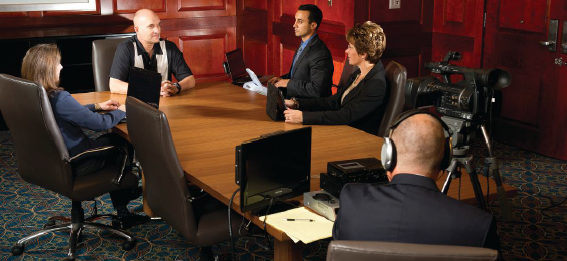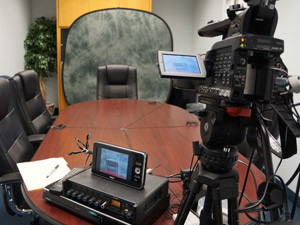The Role of Lawful Videography in Depositions and Tests
Lawful videography has emerged as a vital tool in both depositions and trials, offering a complex strategy to recording witness testimonies. As lawful specialists increasingly recognize its value, it prompts a deeper evaluation of just how these visual documents can influence juror assumptions and test outcomes.

Significance of Lawful Videography
Legal videography plays a pivotal duty in the documentation and presentation of depositions and trials. This customized area incorporates technological abilities with lawful knowledge to create a trustworthy document of procedures that can substantially influence instance outcomes. The appearance of legal videography improves the understanding of witness statement, enabling jurors and judges to observe not only the talked words yet additionally the behavior, emotions, and body movement of the witnesses.
Additionally, lawful videography provides an unbiased account of occasions, reducing the potential for misinterpretation that can accompany composed records alone. This visual documents acts as an important device throughout trial discussions, facilitating a clearer and even more influential story for both complainants and accuseds. In addition, the capability to replay video clip sections during court proceedings allows lawful groups to highlight bottom lines, enhancing their disagreements efficiently.
The significance of lawful videography extends past the court; it also plays a vital function in maintaining evidence for future referral, whether for charms or additional lawsuit. As such, its integration right into the legal procedure is crucial for making certain a fair and exact depiction of the realities, inevitably adding to the search of justice.

Refine of Legal Videography
While capturing the nuances of depositions and trials, the procedure of legal videography entails several important actions that guarantee premium, accurate recordings. Originally, a specialist lawful videographer prepares by reviewing the situation products and comprehending the particular demands of the deposition or trial. This preparation consists of acquainting themselves with the participants and the context, which assists in capturing relevant details.
On the day of the recording, the videographer establishes the required equipment, which normally consists of high-def cameras, microphones, and correct illumination. Making certain optimum angles and sound quality is important, as it straight influences the performance of the recording. The videographer interacts with lawyers and participants to develop protocols, guaranteeing that every person understands the recording procedure.
During the deposition or test, the videographer meticulously records the process, paying attention to both verbal and non-verbal signs. This includes catching the behavior and responses of witnesses and lawyers. After the session concludes, the videographer might modify the footage for quality and conformity with legal criteria, producing a final item that properly shows the proceedings for future reference and usage in lawful contexts.
Advantages in Depositions
The consolidation of videography in depositions supplies countless benefits that enhance the general procedure of collecting proof. One key advantage is the capability to catch witness testaments with aesthetic and acoustic fidelity, giving a more exact depiction of the witness's behavior, tone, and body movement. This multidimensional method allows attorneys and juries to examine credibility better than conventional written transcripts alone.
Additionally, videographed depositions work as a powerful device for preserving testimony. Ought to a witness come to be unavailable for trial, their taped deposition can be played in court, making certain that their proof continues to be accessible and pertinent. This facet significantly minimizes the danger of losing crucial details that could influence instance results.

Finally, videography enhances the overall professionalism of the deposition process, instilling confidence in clients relating to the thoroughness of their legal depiction (legal videography). By leveraging modern technology, lawyers can substantially try this website improve the efficiency of depositions
Influence On Tests
In lots of tests, the combination of videography can considerably influence the discussion of evidence and the court's understanding. Lawful videography captures witness statements and essential evidence in a dynamic style, enabling jurors to engage with the material on multiple levels. This aesthetic part enhances the storytelling element of a test, offering context and psychological vibration that typical text-based proof may lack.
Moreover, video clip recordings can offer as powerful tools for impeachment throughout cross-examination. When discrepancies arise between a witness's prior statements and their court testimony, video clip proof gives an objective reference that can persuade jurors' opinions. This immediacy and clarity can boost the credibility of a party's narrative while simultaneously threatening opposing disagreements.

Future Trends in Legal Videography
As we look toward the future of lawful videography, numerous emerging patterns promise to improve its function within the court. One significant pattern is the assimilation of fabricated knowledge (AI) in video analysis and editing. AI can streamline the process of recognizing key minutes in taped depositions, enabling lawyers to quickly access appropriate web content, thereby improving effectiveness in instance prep work.
Additionally, the surge of virtual reality (VR) and increased reality (AR) innovations is anticipated to change just how jurors experience evidence. legal videography. By immersing jurors in a simulated environment, these technologies can provide an extra extensive understanding of complicated situations, causing more informed considerations
In addition, the raising need for remote depositions, increased by the COVID-19 pandemic, will likely continue. Lawful videographers will certainly need to adjust to new software application and platforms to ensure high-grade recordings in virtual setups.
Lastly, the expanding emphasis on information safety and security will see post require more stringent methods for storing and sharing video clip evidence. As the legal landscape develops, lawful videographers need to stay abreast of these fads to keep their significance and effectiveness in the judicial procedure.
Final Thought
In summary, lawful videography serves an important function in the judicial process, boosting the integrity of depositions and tests. By catching the subtleties of witness testimonies, this tool not just preserves important proof however also help in presenting info effectively to jurors. The importance of aesthetic documentation in reviewing reliability and helping with cross-examination can not be overstated. As innovation continues to advance, legal videography is positioned to further change its role within the legal landscape.